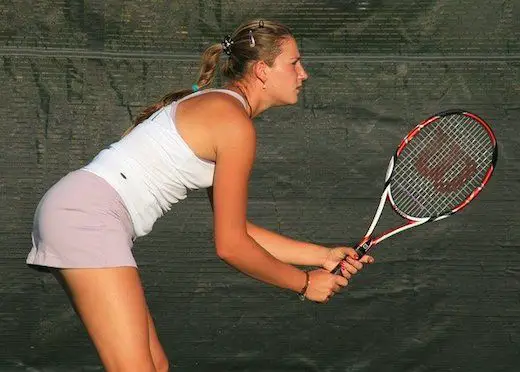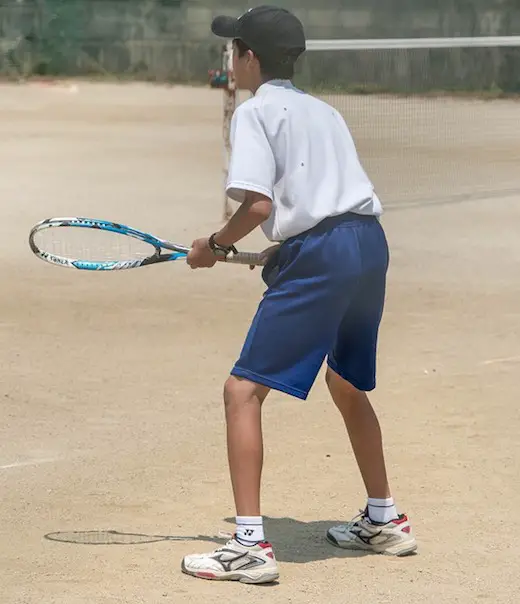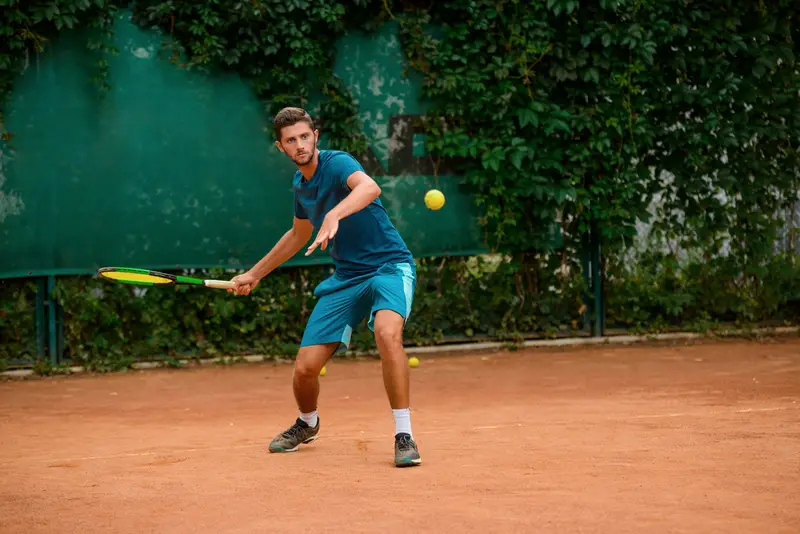Your Guide
 Gavin Davison
Gavin Davison
Tennis is just one of many sports that people play to burn calories.
This can be done with the purpose of losing weight, improving fitness, or just for general wellbeing.

But regardless of your personal reasons for playing tennis, the fact remains that it is an activity that burns a surprising number of calories – as identified by medical professionals.
In fact, depending on your intensity levels, if you’re enjoying just a light hit, you may burn somewhere in the region of 400-500 calories.
However, if you are training quite intensely and really pushing hard, you could burn up to 1,000 calories and even more.
Pretty astounding, right?
And believe me, if you’re wanting to get in shape or lose weight, it sure beats slugging things out on the treadmill!
When you consider that an average adult is supposed to consume somewhere around 2,000 calories a day, it’s all the more impressive that just 2 hours of tennis could result in a burn of your total daily intake.
Not only that – you are having a great time burning those calories while HITTING THE BALL AROUND.
Perhaps that’s why us tennis players tend to eat so much pasta and other carbohydrates!
With that said, as you likely know, tennis can be played in two formats – singles and doubles. And as expected, there are different calorie burning numbers for each, as detailed below.
Calorie Burns for Singles vs Doubles
It goes without saying that when you are playing singles, you’re going to burn more calories than if you were playing doubles.
This has been scientifically proven!
This is because you are having to hit each and every ball that comes over the net, leading to more physical exertion.
On top of that, you’ve got to cover the entire court rather than being responsible for just half of it in doubles.
Add these two factors together, the calories burned can be quite different for the two:
Calories Burned in Singles
Bear in mind here that playing singles could involve practicing or playing an actual match, and the two scenarios could have slightly different figures.
However, on average, playing singles in tennis burns anywhere from 300-600 calories. This window of 300 calories is because it actually depends on your weight.
For example, if you weigh 175lbs you will burn around 635 calories per hour, according to the statistics.
This then increases/decreases for the more/less you weigh, as you’d expect.
Calories Burned in Doubles
In contrast to singles mentioned above, playing doubles does burn fewer calories.
When you think about it, if your partner is doing their job correctly (doesn’t always happen I know!), they should be covering one-half of the court and therefore taking some of the pressure away from you.
This has a direct impact on the number of calories burned for a typical hour of doubles play.
Let’s take a 175lb player as an example again – they would burn around 476 calories per hour played, which is clearly much less than for singles play.
Other Considerations to Take Into Account
Of course, the precise number of calories that you burn compared with somebody else can vary greatly.
There is certainly no exact figure, but the science has shown us that we can at least get a rough estimate per hour of play.
However, as I’ve touched upon above, the calories burned does depend on a few other factors besides just the singles/doubles action and YOUR WEIGHT:
Training vs Matches
It goes without saying that there are different intensities to consider between training and matches.
In training, you have the chance to really push hard with basket drills, structured points, 2 on 1 drills, and so much more.
Of course, in training, you can even combine the drills with fitness, and yes, certain drills do burn far more calories than others. Just check the video below if you’d like an idea:
Personally, I prefer drills that require a lot of movement if I’m looking to get a really great workout in, but that’s up to you.
Now, while in training you can control the intensity, in matches, sadly, you can’t.
You’ll need to play up to the intensity of your opponent or better if you’re going to win, but you do get breaks in between each point, every 2 games, and after a set.
This is why the calories that you burn can be quite different between the two.
Your Style of Play
This is one of the biggest things to consider out of them all.
Of course, there are many styles of tennis, ranging from what we’d call a ‘grinder’ to someone who just smokes the ball each point.
If you’re a grinder, you make a lot of balls in court and tend to win games based on consistency and fitness, although this naturally means that you’ll burn more calories out there on the court.
However, if you are someone who goes for a big winner early in the point, your rallies won’t be as long and therefore you won’t burn as many calories.
In terms of professional tennis, perhaps the best examples of each would be Diego Schwartzman as a grinder and Matteo Berrettini as a real big hitter.
Since Schwartzman is much shorter than other players, he has to grind to get wins, as he just doesn’t have the physical stature to blow guys off the court with his groundstrokes.
In contrast, Berrettini most certainly can, which is why he will likely burn fewer calories in a game.
Where You Play – The Climate
Tennis is a game that is enjoyed all over the world, and while the professional tour follows the sun, those that don’t play on tour don’t quite enjoy the same luxuries.
Should you play in colder climates such as the UK, Canada, or Russia, you’ll likely have to push a little harder before you get a sweat on.
However, in places such as South America, Australia, or the Southern states in the USA, you could be sweating as soon as you walk on the court.
This combination of heat and physical exertion means that you can actually burn more calories in a shorter space of time – something which is ideal for fat loss.
If you want the scientific reasons why, it’s because your body needs to work incredibly hard to keep your internal temperature cool, which isn’t the case if you are playing tennis (or any sport) in colder climates.
It’s actually a really fascinating subtopic should you want to look into it, and it would seem that the top players prefer to venture into warmer climates for training too!
Like the article? Let us know down below, and give us a heads up if there’s anything you’d like to add!



